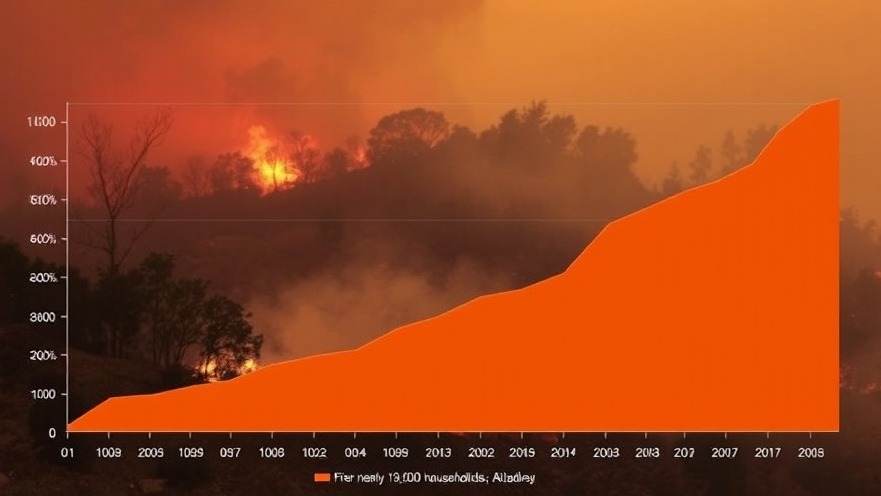
The Extent of Real Estate Loss from Wildfires
The devastating fires in Pacific Palisades and Altadena have left a significant mark on California's real estate landscape, with losses estimated to exceed $30 billion. This staggering figure includes damage to an array of properties, from rental units and bungalows to multi-million dollar homes. According to a thorough analysis by the Los Angeles Times, nearly 13,000 households have been displaced due to these fires, emphasizing the widespread impact of this catastrophe on California residents.
A Closer Look at Displacement and its Consequences
With almost 9,700 single-family homes and 373 mobile homes destroyed or damaged, the implications touch on various sectors of the community. Particularly concerning is the loss of affordable housing; records show that in Pacific Palisades alone, 770 rent-controlled units were lost. This situation raises questions about the sustainability of the remaining affordable housing stock in an area already facing a crisis of availability.
Building and Zoning Challenges
In the aftermath of these fires, property owners face numerous challenges not only in rebuilding but also navigating complex zoning laws. Structures like cottage clusters that were common in the first half of the 20th century may not be rebuilt due to updated zoning restrictions. Understanding the potential difficulties for those needing to rebuild is essential for residents weighing their next options.
The Economic Ripple Effect: Tax Revenue Lost
The fires not only impact property owners but have also created a significant loss of tax revenue for local government agencies, estimated to reach $61 million annually during the recovery phase. As property owners await insurance payouts and navigate rebuilding, local schools and community services may feel the pinch from decreased funding. This situation highlights the interconnectedness of community and economy, where the loss of property directly influences broader tax structures.
The Variance in Property Values and Loss Estimates
Different evaluations of the damages have emerged, with estimates from various sources varying significantly. The Times' report approximates that the real estate losses reach as high as $33 billion, while the CoStar Group puts the number slightly lower. The latest estimates shed light on the complex factors affecting recovery, emphasizing the importance of accurate assessments in understanding the full scope of the crisis.
Local Voices: The Personal Impact of the Fires
Residents like Christine D., who lost her home and valued possessions, offer a poignant reminder of the fires' costly impacts. Her story underscores the emotional toll of such disasters, as personal belongings, memories and long-term investments vanish in an instant. Stories like hers illuminate the broader human experience behind the statistics.
Future Directions and Community Resilience
Rebuilding efforts will not just restore physical structures, they will also shape the future of communities ravaged by fire. As the residents of Pacific Palisades and Altadena begin their long journey toward recovery, their resilience in the face of adversity becomes increasingly important. Strategies to support their return, including favorable zoning policies and financial assistance, will be critical in making this transition smoother.
What the Future Holds: Predictions for Recovery and Growth
Looking ahead, industry experts anticipate a longer timeline for recovery, with full rebuilding potentially taking five years or more. This extends beyond just the physical constriction of homes; community recreation centers, schools, and local businesses will also need to be restored or rebuilt, thus influencing the overall recovery timelines. The forecast of a gradual, but necessary return to stability in the community offers hope amidst the destruction.
Takeaway: Community and Individual Actions
The impacts of the Palisades and Eaton fires extend far beyond just property loss; they signify a community at a crossroads. Residents and policymakers alike must prioritize funding, policies for rebuilding, and assistance to ensure that recovery efforts are efficient and equitable.
As California residents respond to these ongoing challenges, understanding the multiple facets of recovery—economic, emotional, and communal—will be essential in moving forward. Your voice matters: stay engaged in local discussions about recovery efforts and contribute where you can.
 Add Row
Add Row  Add
Add 




Write A Comment